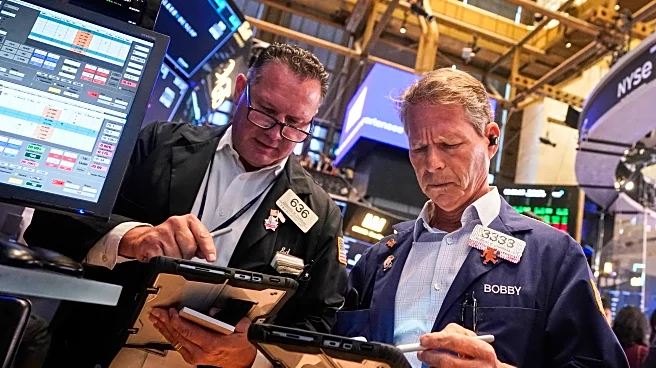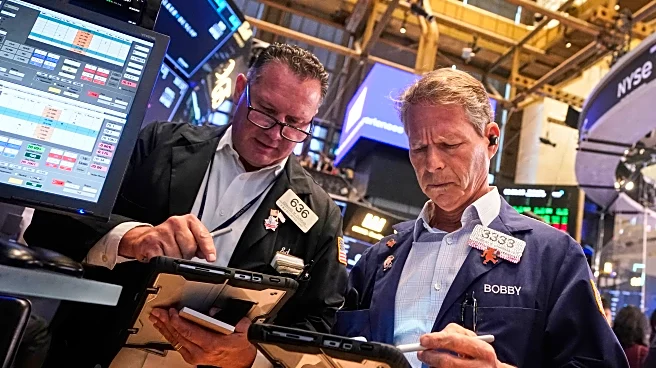What's Happening?
U.S. business activity has moderated for the second consecutive month in September, according to S&P Global's flash U.S. Composite PMI Output Index. The index, which measures manufacturing and services sectors, fell to 53.6 from 54.6 in August, indicating slower expansion. Businesses have reported increased costs due to tariffs, but have struggled to pass these costs onto consumers, leading to squeezed margins. Despite the slowdown, inflation remains above the Federal Reserve's 2% target, with recent interest rate cuts aimed at addressing these economic challenges. The survey highlights the impact of tariffs on business costs and the difficulty in maintaining price levels amid weak demand.
Why It's Important?
The moderation in business activity is a critical indicator of the U.S. economic health, affecting sectors from manufacturing to services. The inability of businesses to pass on increased costs due to tariffs suggests potential pressure on profit margins, which could impact investment and employment. The Federal Reserve's interest rate cuts are intended to stimulate economic activity, but the persistent inflation above target levels poses challenges for policymakers. The situation underscores the complex interplay between trade policies, consumer demand, and monetary policy, with implications for economic growth and stability.
What's Next?
The Federal Reserve is likely to continue monitoring economic indicators closely, with potential further interest rate adjustments to support growth and manage inflation. Businesses may need to explore strategies to mitigate tariff impacts, such as cost-cutting measures or supply chain adjustments. The ongoing trade tensions and their effects on business costs will remain a focal point for policymakers and industry leaders, influencing future economic decisions.
Beyond the Headlines
The impact of tariffs on U.S. business activity highlights broader geopolitical and economic dynamics, including trade relations and global supply chain dependencies. The situation reflects the challenges faced by businesses in adapting to changing trade policies and economic conditions. The moderation in activity also points to potential shifts in consumer behavior and market competition, as businesses navigate the complexities of pricing and demand.












